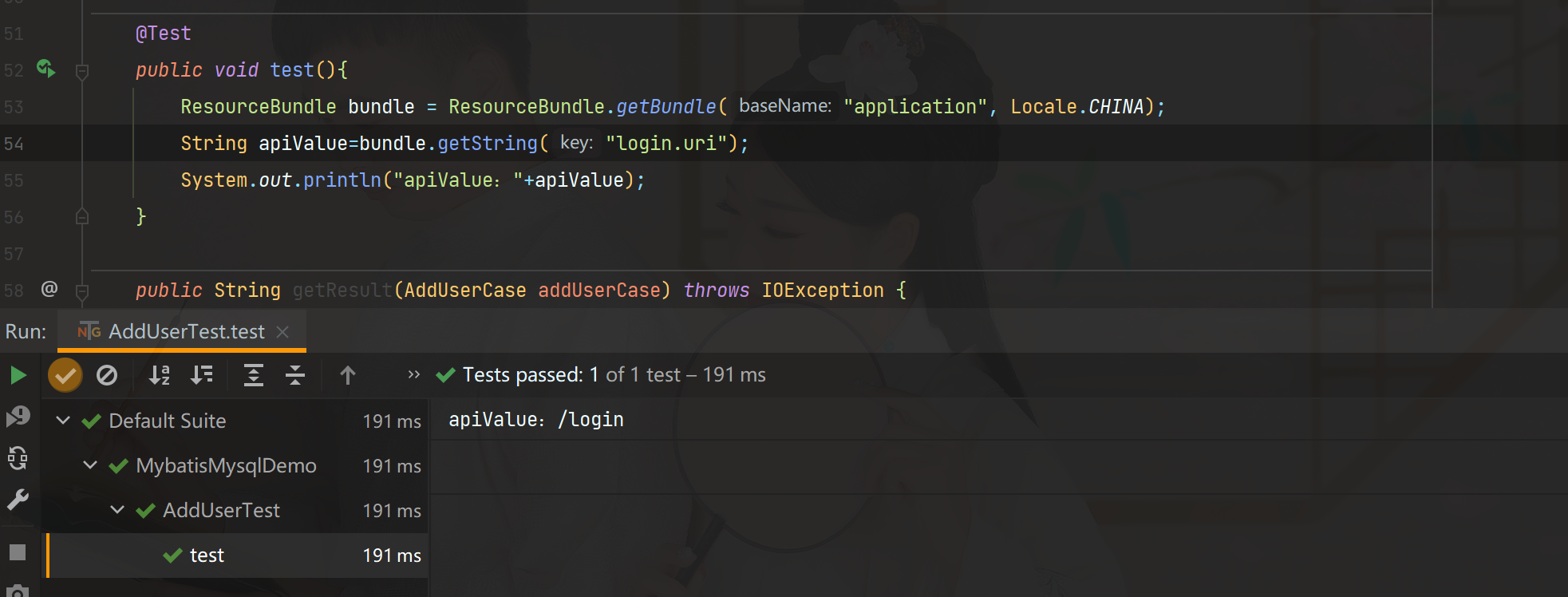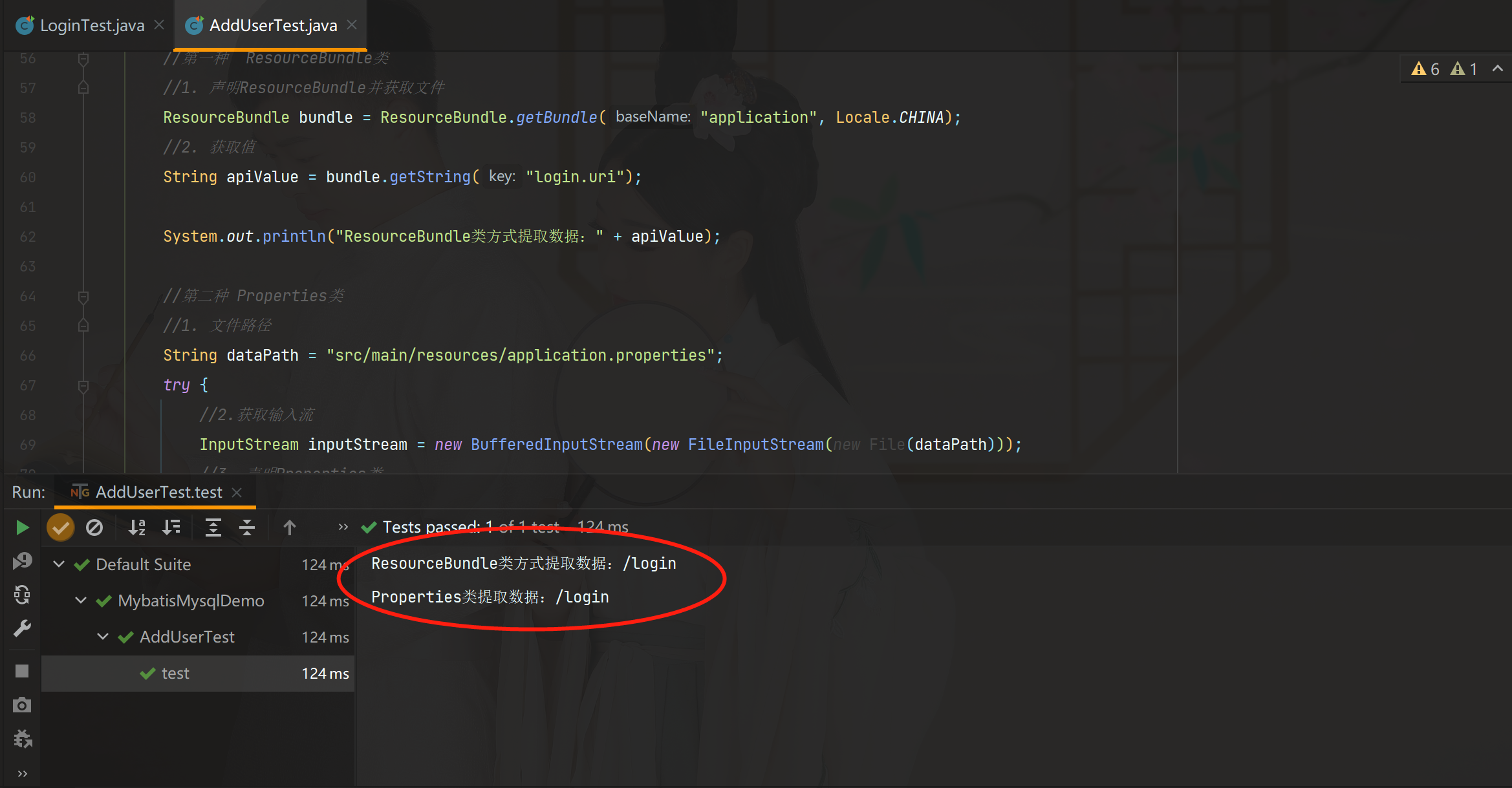
properties 文件多为配置信息,日常操作很频繁,例如测试框架中的接口配置文件,如下
test.url=http://localhost:8888
#登陆接口uri
#login.uri=/v1/login
login.uri=/login
#更新用户信息接口uri
updateUserInfo.uri=/v1/updateUserInfo
#获取用户列表接口uri
getUserList.uri=/v1/getUserInfo
#获取用户信息接口uri
getUserInfo.uri=/v1/getUserInfo
#添加用户接口uri
addUser.uri=/v1/addUser
那么,在写接口用例的时候,怎么获取到这些对应的测试数据呢?

//第一种 ResourceBundle类
//1. 声明ResourceBundle并获取文件
ResourceBundle bundle = ResourceBundle.getBundle("application", Locale.CHINA);
//2. 获取值
String apiValue = bundle.getString("login.uri");
System.out.println("ResourceBundle类方式提取数据:" + apiValue);
//1. 文件路径
String dataPath = "src/main/resources/application.properties";
try {
//2.获取输入流
InputStream inputStream = new BufferedInputStream(new FileInputStream(new File(dataPath)));
//3. 声明Properties类
Properties properties = new Properties();
//4. 从字节输入流中读取键值对。
properties.load(inputStream);
//5. 获取值
String string = properties.getProperty("login.uri");
System.out.println("Properties类提取数据:" + string);
} catch (IOException e) {
System.out.println("properties文件路径书写错误,请检查!");
}

ResourceBundle 类通常是用于针对不同的语言来使用的属性文件。
而如果你的应用程序中的属性文件只是一些配置,并不是针对多国语言的目的。那么使用 Properties 类就可以了。
通常可以把这些属性文件放在某个 jar 文件中。然后,通过调用 class 的 getResourceAsStream 方法,来获得该属性文件的流对象,再用 Properties 类的 load 方法来装载。
